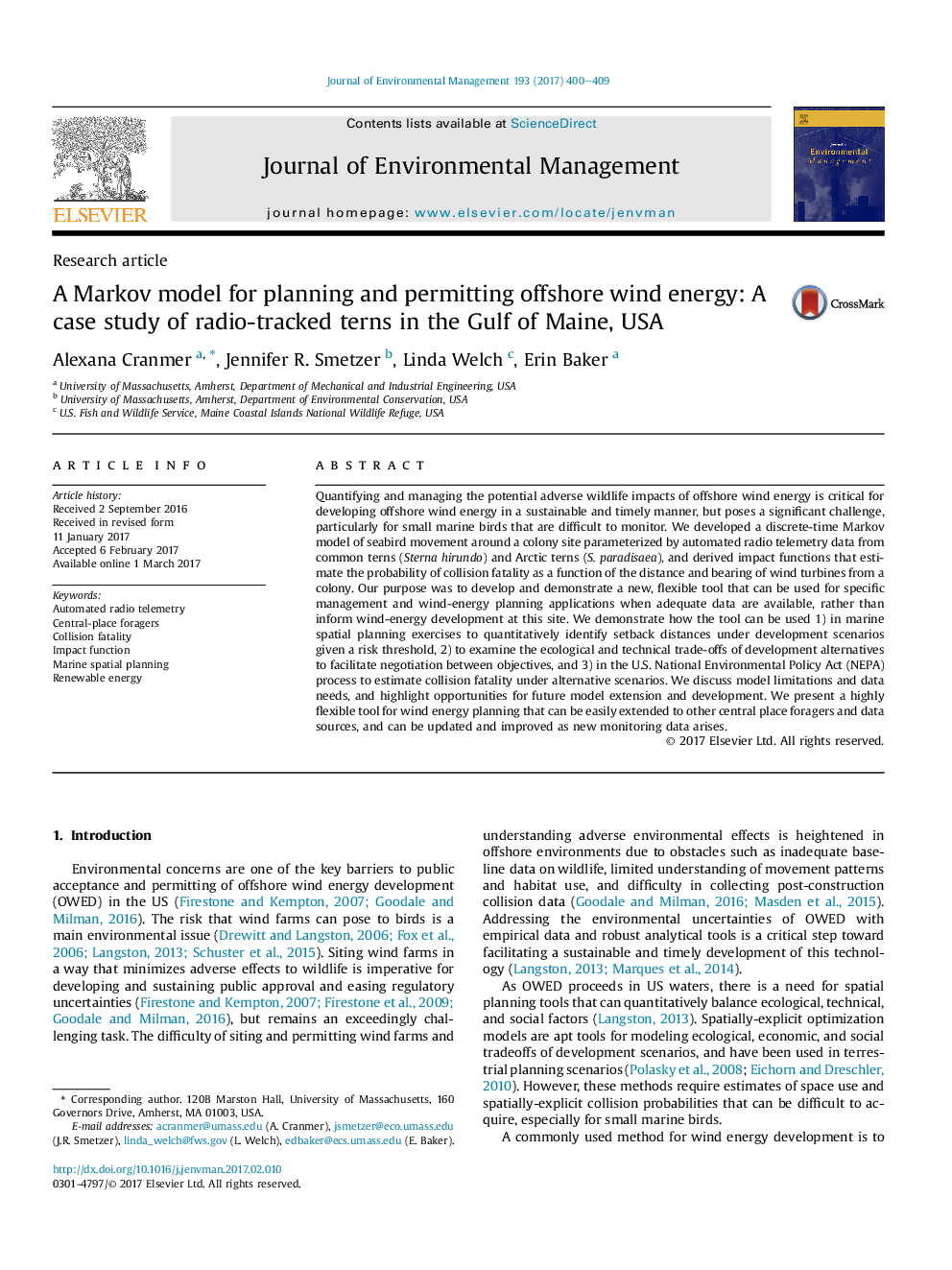| Article ID | Journal | Published Year | Pages | File Type |
|---|---|---|---|---|
| 5116843 | Journal of Environmental Management | 2017 | 10 Pages |
Abstract
Quantifying and managing the potential adverse wildlife impacts of offshore wind energy is critical for developing offshore wind energy in a sustainable and timely manner, but poses a significant challenge, particularly for small marine birds that are difficult to monitor. We developed a discrete-time Markov model of seabird movement around a colony site parameterized by automated radio telemetry data from common terns (Sterna hirundo) and Arctic terns (S. paradisaea), and derived impact functions that estimate the probability of collision fatality as a function of the distance and bearing of wind turbines from a colony. Our purpose was to develop and demonstrate a new, flexible tool that can be used for specific management and wind-energy planning applications when adequate data are available, rather than inform wind-energy development at this site. We demonstrate how the tool can be used 1) in marine spatial planning exercises to quantitatively identify setback distances under development scenarios given a risk threshold, 2) to examine the ecological and technical trade-offs of development alternatives to facilitate negotiation between objectives, and 3) in the U.S. National Environmental Policy Act (NEPA) process to estimate collision fatality under alternative scenarios. We discuss model limitations and data needs, and highlight opportunities for future model extension and development. We present a highly flexible tool for wind energy planning that can be easily extended to other central place foragers and data sources, and can be updated and improved as new monitoring data arises.
Related Topics
Physical Sciences and Engineering
Energy
Renewable Energy, Sustainability and the Environment
Authors
Alexana Cranmer, Jennifer R. Smetzer, Linda Welch, Erin Baker,
